Have you ever thought about different social groupings? Why you like the brands that you like? Recently, a man said to me, “my daughter is an iPhone girl, but I’m an Android guy.” What makes one person an Android person and another an iPhone person?
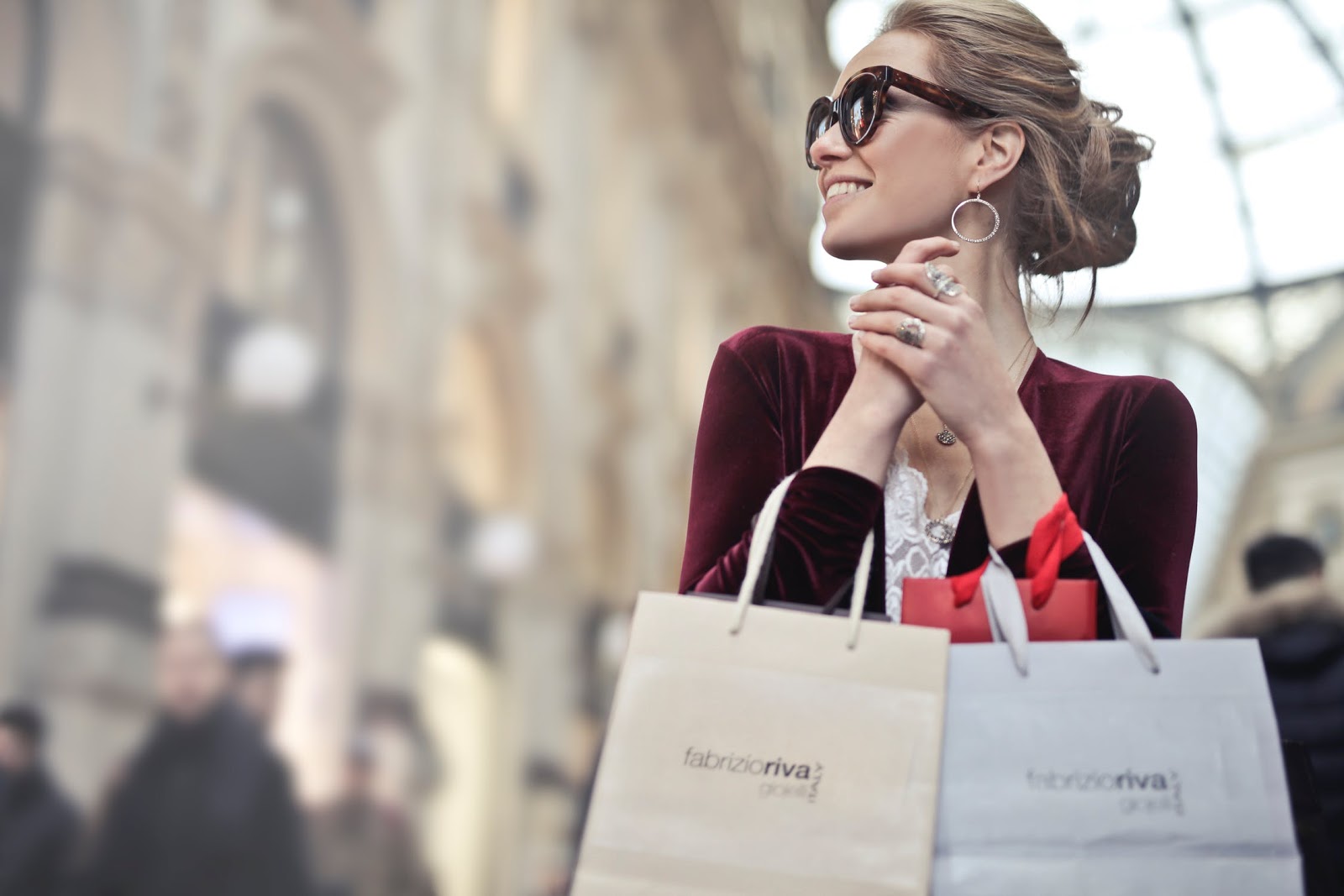
We have strong attachments to our products. From what we wear to what we drive, we often see objects and style as extensions and parts of our identity.
UX Design is centered on human behavior. By understanding human wants and desires, we create a tailored experience that speaks to fundamental human needs, ultimately leading to a predictable path of decision.
Choice Architecture
People’s choices are persuasively influenced by design elements selected by choice architects. UX designers and brand experts often play this role by designing options in a way that leads users towards desired behaviors without limiting choice.
Take a moment to think about the last purchase you made. Where were you? What did you see? What were you feeling? Do you know why you selected what you did? Choice architects design digital and store displays that play to our human needs and biases.
Hierarchy of Needs
Let’s take a look at our basic human needs and then examine how design is used to create motivation and draw users.
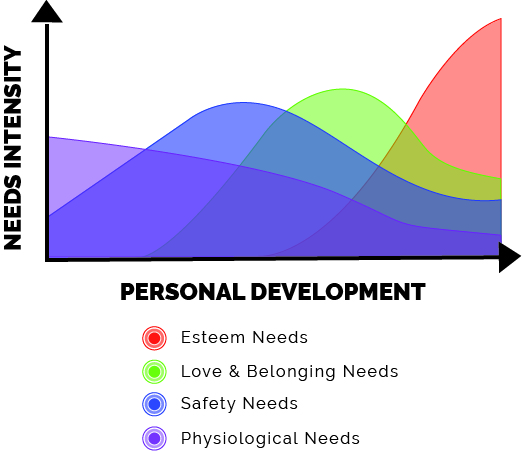
This alternate display of Maslow’s hierarchy triangle to shows how our needs overlap over one another
Abraham Maslow's hierarchy of needs is a model that outlines human needs that motivate behavior. Maslow proposed five different kinds of human needs, beginning with our most basic need: survival. Physiological needs, such as shelter and food, are followed by needs related to self-preservation and safety. Next, there are social needs – to be a part of a group for love and belonging. Fourth, humans have esteem needs, for respect and dignity. The final need in the hierarchy is the need for self-actualization, or fulfilling one's potential.
Human Factors in Retail Design
Art directors, creative directors, and designers often work together to create an immersive in-store brand experience. By understanding human factors, these choice architects design environments that communicate to us through all of our senses – sight, touch, sound and (at times) taste. As we interact with these environments, often our security, social and esteem needs are met, creating a positive consumer experience.
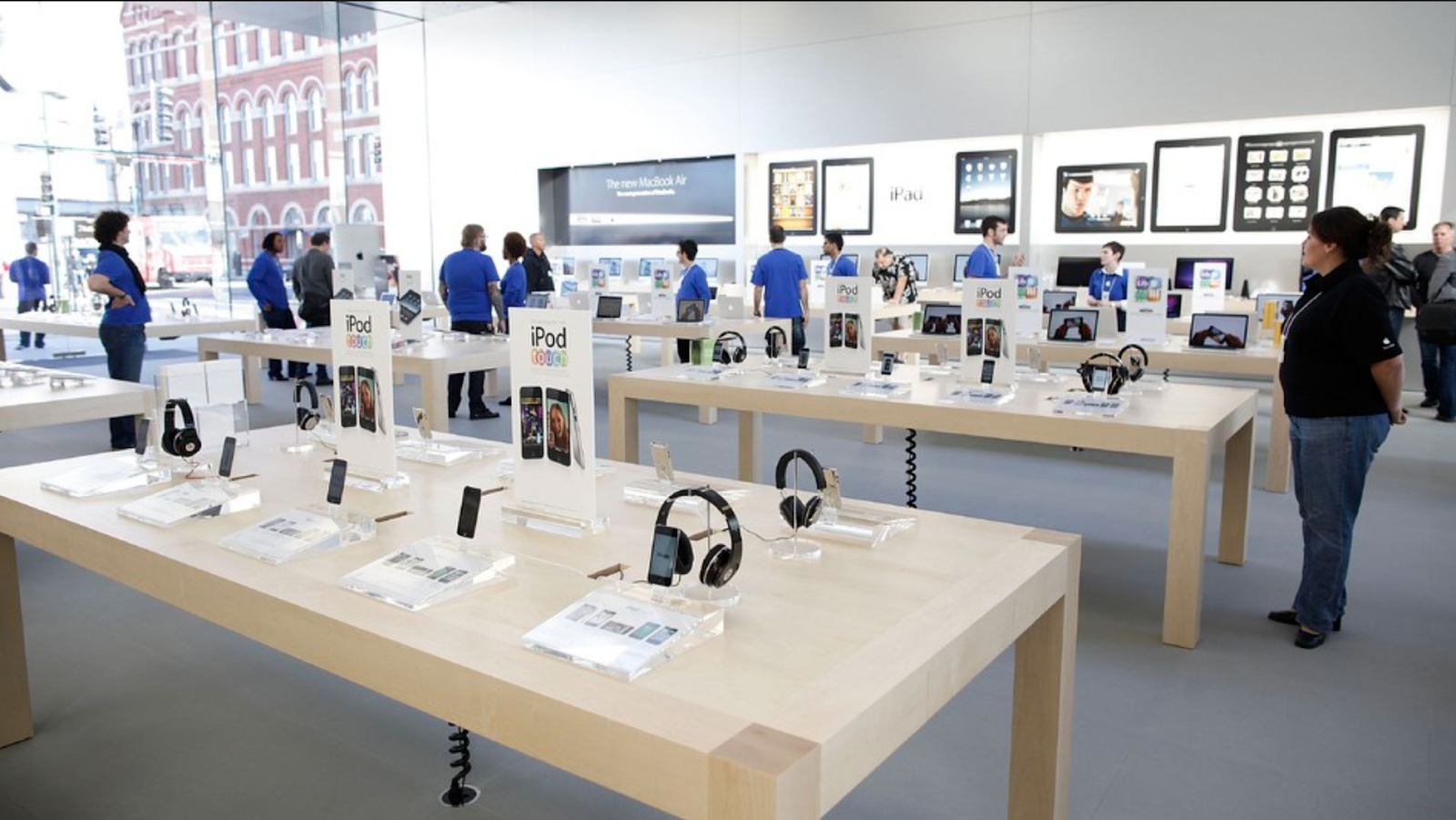
At the Apple store, colorful displays and emotional design forge a connection and feeling of belonging.
Conceptualized by Eight Inc, the Apple store features a minimalist design that welcomes visitors to do more than just browse. Products are open and out on large tables, encouraging curious play, comparison, and engagement. Employees roam the store and are ready to answer questions and offer an easy checkout process through the mobile register and Apple Pay, the brand’s proprietary payment system.
Large, lit product displays feature lifestyle imagery showing people’s faces, their emotion and colorful user interface design. Humans can identify with images they find relatable. Often, when products are placed within these familiar setting, people will feel an affinity towards them.
Lighting Design
Lighting design effects user behavior in retail environments through space perception, spatial cognition, and visual stimuli. It helps attract customers, increasing engagement with the built environment and displayed merchandise, ultimately building brand equity.
The Science of Smell
An adult can distinguish 10,000 different smells and our bodies generate scent neurons every few weeks to ensure they’re in good working order. Scent travels immediately through various parts of your brain instead of being processed centrally first, which is unlike any of our other senses. Scent is one of our strongest mnemonic devices, in that it is most closely linked to memory. Smells such as fresh coffee can evoke a happy memory faster than touching the item or even tasting the first sip. Scent can draw consumers in, and keep them in experiences.
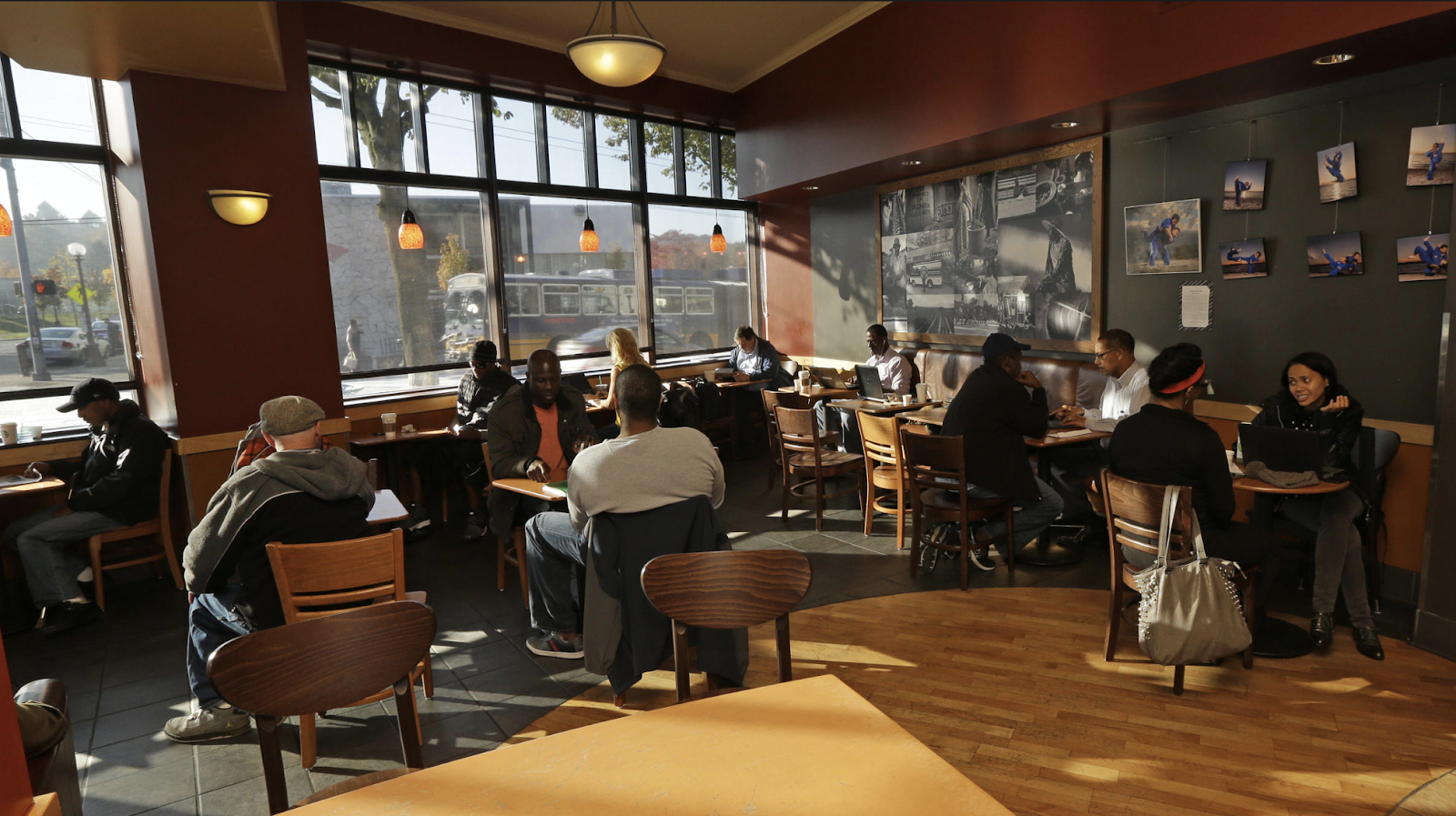
Starbucks stores offer free wifi, encouraging visitors to stay while tapping into our need for community
A great example of this is Starbucks. This iconic brand has built its identity by offering customers a relaxing experience. The experiential aspect of the brand has been effectively implemented on a global scale. As consumers, we trust this brand. The sounds and smell of the environment are pleasing, and we understand if we go to one of their stores anywhere in the world, we can trust that we will receive the same product, in a comforting and familiar experience.
Choice architects are intentional in the selection of all design elements of this space that we experience through our senses.
Retail Space in The Digital World
The digital world is often a mirror to the material world, however, as digital designers, we are limited in what senses we can tap into. Through behavior science, we are able to understand human factors such as cognitive and social bias. We can design systems that leverage these biases and nudge users down a path of conversion.
Cognitive Bias
We often act irrational and impulsive due to cognitive biases— which are flaws in the way we perceive our environments or make judgments.
Authority
Cognitive bias gives us a strong tendency to comply with authority figures.

One way brands leverage this bias is by using celebrity spokespeople. Brands have attributes much like personalities have attributes. People often identify with public figures that have similar attributes to themselves. Creative teams can leverage this bias by running campaigns featuring celebrity endorsement.
Sharing topical information on blogs, videos, ebooks or knowledge shares establishes thought leadership. This is another way to persuade users to select a product or service. Brands who contribute to sharing knowledge are often viewed as authorities in their practice. Often, these brands are superior to those who do not share knowledge.
Social Proof
This bias occurs when people assume the actions of others in an attempt to reflect correct behavior in a given situation by imitating or following others. UX designers and other choice architects use features such as “liking” (think: Facebook) and lists of popular items as ways to feature products and persuasively encourage selection.
How We Use Persuasive Patterns in UX
For the design and development of visittheusa.com Mediacurrent partnered with Code and Theory to create a user experience that features on-page content that persuades through authority and social proof. The “Ask a Local” component establishes authority of the content, while the placement of social ratings through the TripAdvisor platform lend credibility.
The large orange call to action buttons are stark in contrast to the other colors of the site, encouraging the users down a path that nudges them through curiosity, authority and social proof.
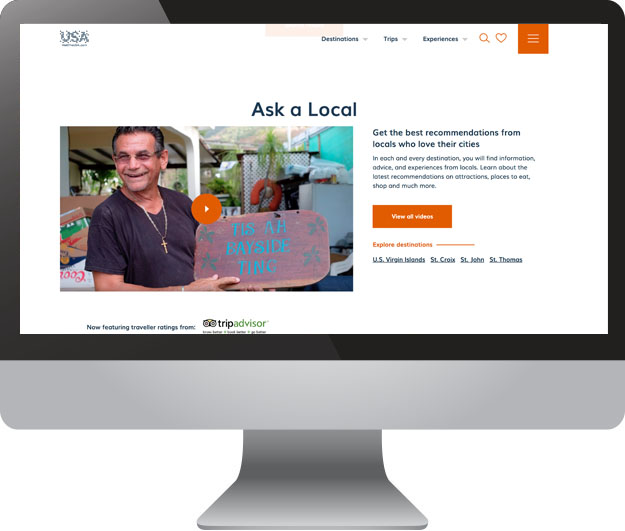
visittheusa.com nudges users through social proof and authority in one page in the “Ask a Local” component
Nudges of Purpose
With this knowledge, we have a responsibility in how we market to our consumers. As we learn more about ourselves we can reach our customers’ needs on a deeper level, we must keep in mind how they will help or hinder us in reaching our highest levels of potential. I would challenge us, the digital and UX design community, to learn more about the factors that influence our decision-making and help others gain greater insight into our shared humanity.